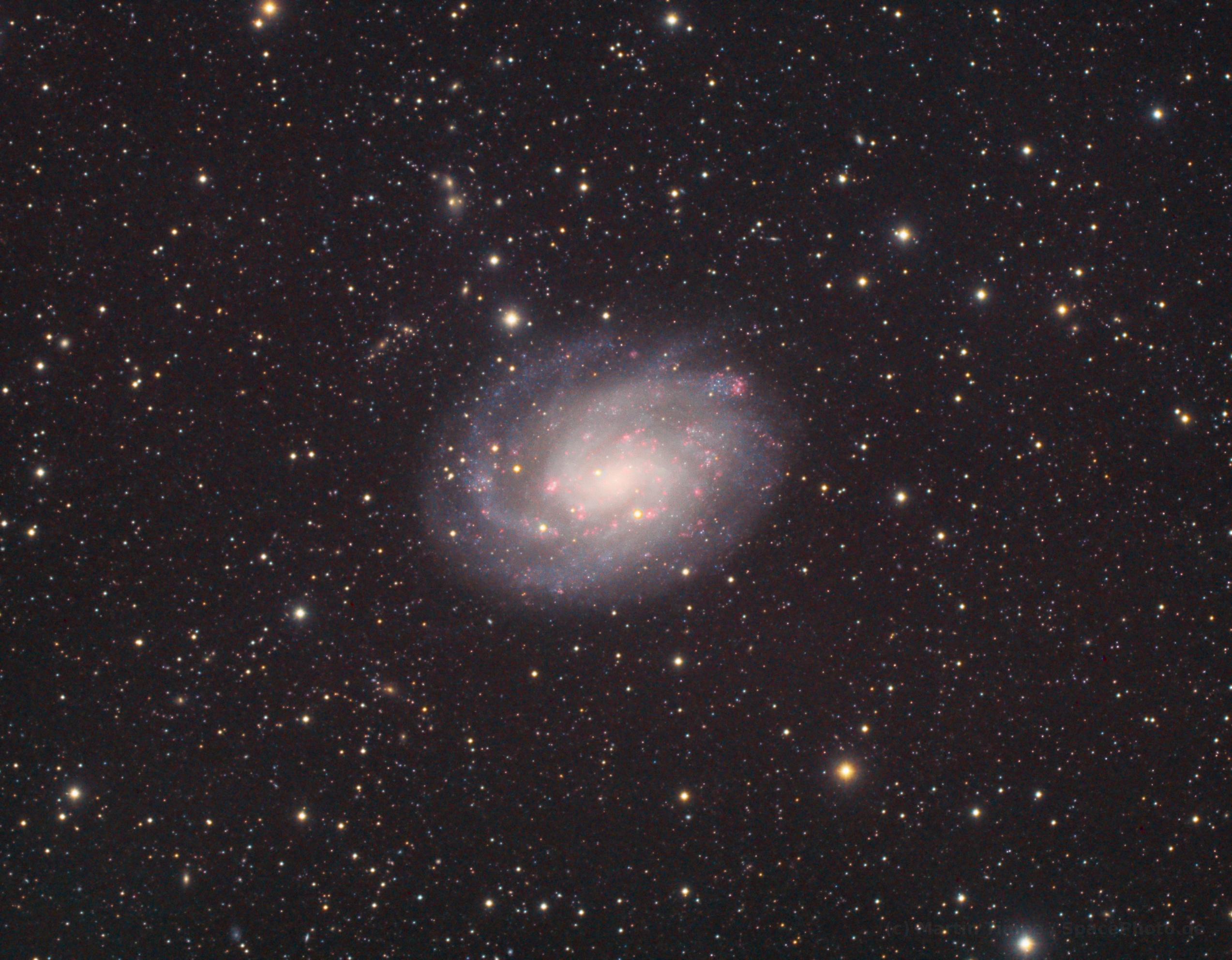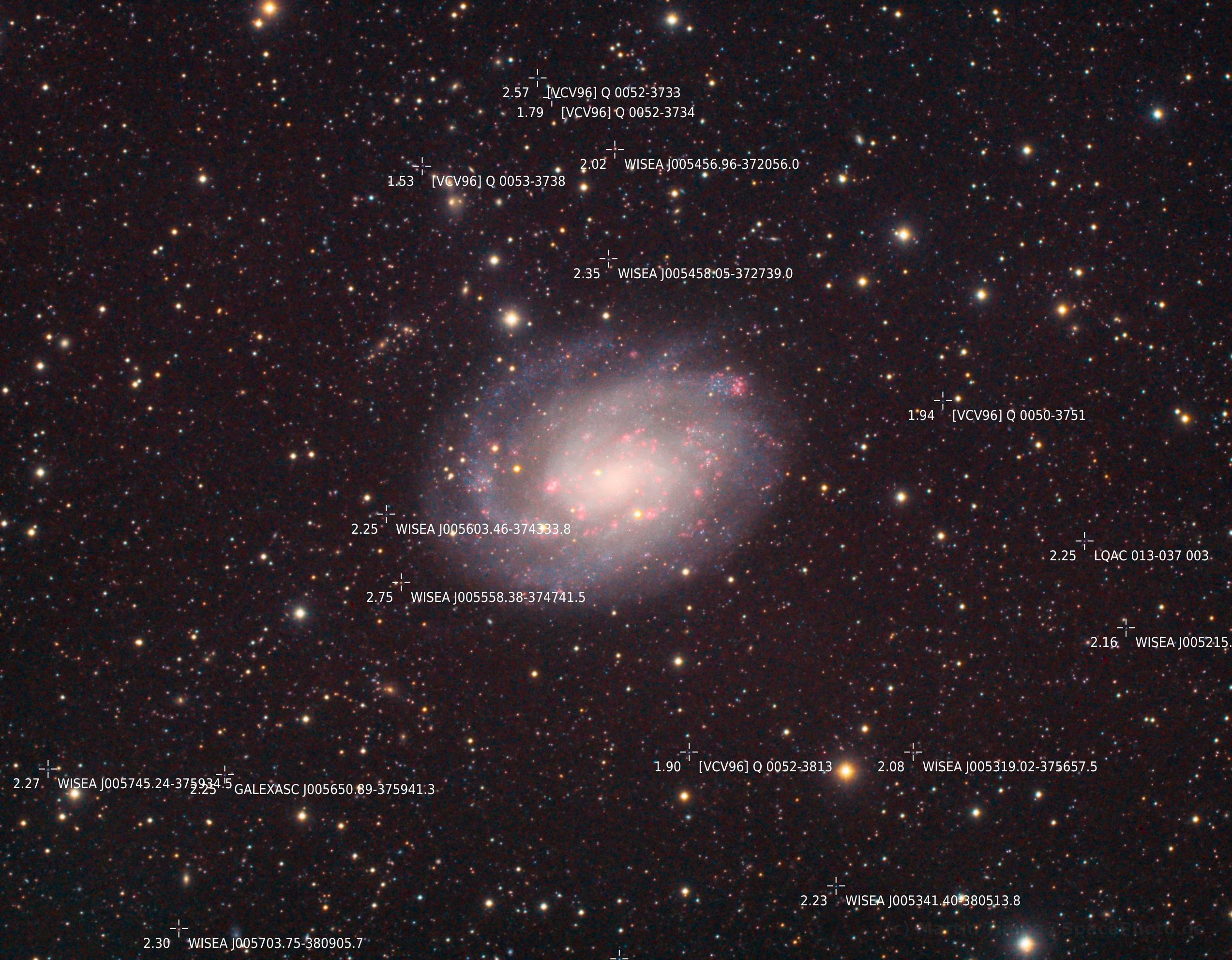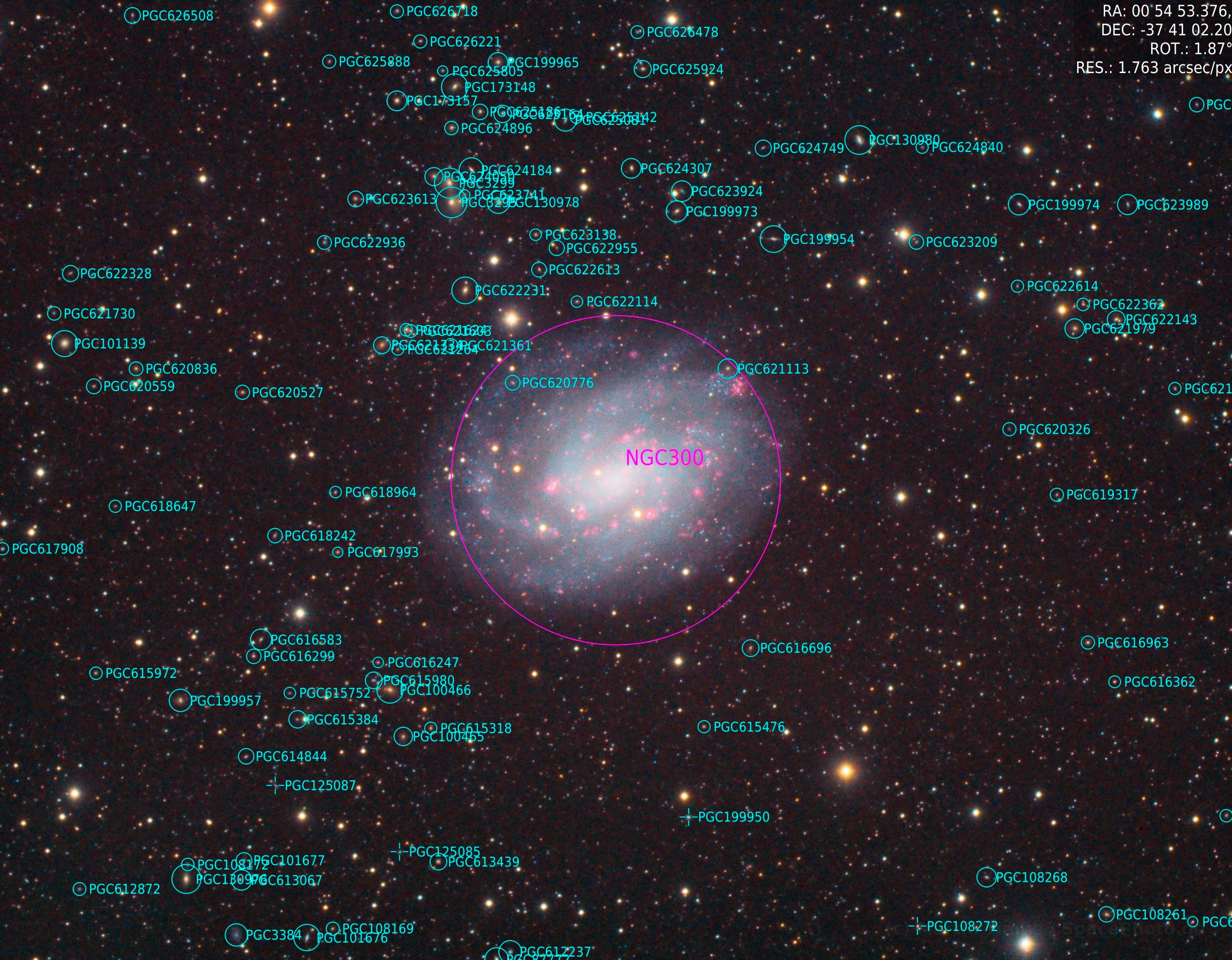NGC 300
NGC 300 is a spiral galaxy in the constellation Sculptor in a distance of roughly 6 million light years. It's appearance with hydrogen-alpha emission areas indicating star formation activities resembles one of our nearest neighbor galaxies, the triangulum galaxy M33 in approx. 2.7 Mio. light years distance.

Image data: telescope Takahashi FSQ106ED @f/5, Camera Atik 460EXM, L: 28x600s, Ha: 6x600s, RGB 6x300s per channel, Atik 460EXM, September 2019, Farm Tivoli, Namibia
At a diameter of 94000 light years NGC 300 is nearly as large as the milkyway. It is positioned in the middle between our own local group and the Sculptor galaxy group. Compared to the Triangulum Galaxy the apparent brightness of NGC 300 is by 4 magnitudes lower: 9m0. A photographer needs to spend more time on the exposures to gain the same signal to noise ratio. The photo presented here was taken during a stay on the astro farm Tivoli in Namibia and the sky was perfect without any civil light pollution around new moon.
What can one see looking more closely in the neighborhood of the galaxy itself? There are faint spots all around the galaxy - and - yes: most of these fuzzy spots are galaxies, too. Sometimes they can be hardly distinguished from stars due to the short focal length (530mm) of this exposure.
Besides the more or less extended background galaxies there is another category of objects: quasars - quasi stellar objects. The name says it all: they have a star-like appearance. But they are no stars but the most bright and at the same time the most distant galaxies that can be seen (or rather: captured by cameras). To identify them in this picture it was necessary to refer to an astronomical catalogue (see further below). Otherwise they could not be distinguished from stars.
Therefore the below picture was labeled with data extracted from the NASA Extragalactic Database (NED), where redshifts of quasi stellar objects (QSO) can be found (further the mission of the data origin is labeled). The result on the image are 21 quasars with a redshift value of up to z=2.75. With http://www.astro.ucla.edu/~wright/CosmoCalc.html one can come to a guess under the assumption of a flat universe, that the light travel time for z=2.75 is roughly 11 billions years. It means that by this spot of light we are looking back 11 billion years in the past. The light started it's journey towards the camera when our solar system did not yet exist. As the universe continued to expand meanwhile, the today's distance to this quasar is much more than 11 billion light years. If this is a valid conclusion since there is no directly measurable evidence with today's knowledge. The lowest identified apparent brightness magnitude on the image below is 20.6mag.
As mentioned further up in this description, besides the quasars there are many galaxies at longer distance visible. To illustrate this the following image shows annotation from the PGC (Principal Galaxies Catalogue).

